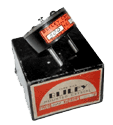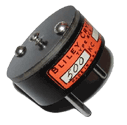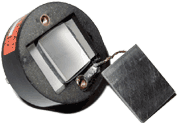1932 Single-Signal Filter
| BC3-SSF 1932 Single-Signal Filter |
In 1932 Bliley Electric designed the first inexpensive single-signal filter for the radio amateur marketplace. At that time, most amateurs built their own transmitters and many build homemade receivers. One of the most desirable features was to be able to hear only one Morse code station at a time on the receiver. While this was possible, it was beyond the budgets of most amateurs and was not even a feature of standard commercial radios of the time.
Fortunately, the filter was incorporated into a "state-of-the-art" receiver designed and built by a famous radio amateur, Jim Lamb. Jim's receiver design was profiled in a 1932 QST magazine. The receiver was well received and the relatively inexpensive crystal filter was at the heart of the design. The filter was available at several frequencies: 465, 500 and 525 kcs. The price was $5.90. It was one of the items listed on the 1934 sales brochure.
Below are photos of this famous filter that helped Bliley Electric become popular among radio amateurs. Click on any of the images for a larger view.
 |
 Screw on top adjusted to put pressure on top of interior electrode during shipment to prevent damage to the crystal. |
Here is the original instruction sheet packed with each filter unit. Notice the National Recovery Act (NRA) stamp on the bottom of the sheet and original company name of "Bliley Piezo-Electric Company". |
|||
|
|
|||||
 |
Three pieces of quartz were used. The enter was the active one wrapped in "fish paper" on one edge, and centered in the space by two rough cut blocks of quartz. Note: the spacers do not make contact with top (visible) and bottom (beneath the quartz) electrodes. Fish paper is a high quality stiff paper that is saturated with oil and often used as a low-voltage insulator. |
||||
|
|||||
|
Front Outside 100 dpi (128K) |
Inside Inside 100 dpi (164K) |